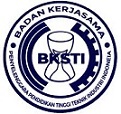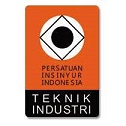Increasing Utilization of Government-Assisted Patchouli Distiller In West Pasaman Regency
Abstract
The patchouli plant has great economic potential for society because it is one of the priority industries. The government continues to encourage the development of the patchouli oil agro-industry. One of the supports provided by the government to improve the quality of patchouli oil is the provision of stainless-steel distiller to several farmer groups in West Pasaman. Unfortunately, this distiller is no longer used even though it is still in good condition. This research proposes appropriate policy directions to increase government-assisted patchouli distillation equipment use in West Pasaman Regency. The policy direction was formulated based on the solution to the obstacles using the Fuzzy Delphi Method (FDM). From the research results, stainless steel distillers are generally better than conventional ones. Still, farmers in West Pasaman Regency do not use government-assisted distiller one hundred percent. Farmers have switched to using traditional distillation. The obstacles to the use of stainless-steel distiller in West Pasaman Regency are community habits, the large capacity of the distiller, the remote location of the distiller, ownership status, the permanent nature of the distiller, the design and mastery of the distiller, technology, and changes in economic sectors. The policy directions related to assistance with stainless steel distiller obtained from the results of this research are: a). The government involves experts in designing and procuring distiller. b). The government conducted a comparative study to determine the appropriate distillation tool specifications. c). Create a policy regarding the number of members of farmer groups. d). Provide technical guidance to farmers regarding the use of stainless-steel distillers. e) Formation of sales cooperatives.
Keywords: Patchouli Oil, Stainless Steel Distiller, Fuzzy Delphi Method, Policy
Full Text:
PDFReferences
E. Guzmán and A. Lucia, “Essential oils and their components in cosmetic products,” Cosmetics, vol. 8, no. 4, pp. 1–28, 2021, doi: 10.3390/cosmetics8040114.
P. Lestari, S. Nurjanah, and E. Mardawati, “Pengaruh Rentang Suhu Distilasi Fraksinasi Terhadap Kadar Patchouli Alcohol (PA) Pada Minyak Nilam,” AgriHumanis J. Agric. Hum. Resour. Dev. Stud., vol. 1, no. 1, pp. 36–42, 2020, doi: 10.46575/agrihumanis.v1i1.52.
D. Rahmayanti, R. A. Hadiguna, S. Santosa, and N. Nazir, “Conceptualization of system dynamic for patchouli oil agroindustry development,” Bus. Strateg. Dev., vol. 3, no. 2, pp. 156–164, 2020, doi: 10.1002/bsd2.85.
J. L. Ríos, Essential Oils. Elsevier Inc., 2015.
J. B. Sharmeen, F. M. Mahomoodally, G. Zengin, and F. Maggi, “Essential oils as natural sources of fragrance compounds for cosmetics and cosmeceuticals,” Molecules, vol. 26, no. 3, 2021, doi: 10.3390/molecules26030666.
M. Moghaddam and L. Mehdizadeh, Influencing Their Constituents. Elsevier Inc., 2017.
M. S. Akthar, B. Degaga, and T. Azam, “Antimicrobial activity of essential oils extracted from medicinal plants against the pathogenic microorganisms : A review,” Issues Biol. Sci. Pharm. Res., vol. 2, no. January, pp. 1–7, 2014.
A. El Asbahani et al., “Essential oils: From extraction to encapsulation,” Int. J. Pharm., vol. 483, no. 1–2, pp. 220–243, 2015, doi: 10.1016/j.ijpharm.2014.12.069.
P. Tongnuanchan and S. Benjakul, “Essential Oils: Extraction, Bioactivities, and Their Uses for Food Preservation,” J. Food Sci., vol. 79, no. 7, pp. 1231–1249, 2014, doi: 10.1111/1750-3841.12492.
A. Balkrishna , S. Bisht, B. Joshi, A. Srivastava, and R. K. Mishra, “Study of essential oil bearing plants, their composition and Ayurvedic herbalism,” J. Essent. Oil Plant Compos., vol. 2, no. 1, pp. 01–19, 2024, doi: 10.58985/jeopc.2024.v02i01.32.
E. Ernawati, R. Masbar, M. S. A. Majid, and A. Jamal, “Production and marketing efficiency of patchouli oil industry in Indonesia,” Reg. Sci. Inq., vol. 13, no. 2, pp. 135–148, 2021.
E. Ernawati, P. Syathi, S. Muhammad, I. Indra, and H. Meilina, “Patchouli Oil Farming: An Alternative to Poverty Alleviation through Smallholders Business,” no. June 2023, 2019, doi: 10.4108/eai.3-10-2018.2284267.
D. Rahmayanti, R. A. Hadiguna, Santosa, and N. Nazir, “Applying system dynamic for predicting the strengths, weaknesses, opportunities, and treats of Patchouli Oil Agroindustry in West Sumatra,” IOP Conf. Ser. Mater. Sci. Eng., vol. 1041, no. 1, p. 012047, 2021, doi: 10.1088/1757-899x/1041/1/012047.
L. M. Ayompe, M. Schaafsma, and B. N. Egoh, “Towards sustainable palm oil production: The positive and negative impacts on ecosystem services and human wellbeing,” J. Clean. Prod., vol. 278, p. 123914, 2021, doi: 10.1016/j.jclepro.2020.123914.
M. K. Swamy and U. R. Sinniah, “Patchouli (Pogostemon cablin Benth.): Botany, agrotechnology and biotechnological aspects,” Ind. Crops Prod., vol. 87, pp. 161–176, 2016, doi: 10.1016/j.indcrop.2016.04.032.
P. L. B. Jain, S. R. Patel, and M. A. Desai, “Patchouli oil: an overview on extraction method, composition and biological activities,” J. Essent. Oil Res., vol. 34, no. 1, pp. 1–11, 2022, doi: 10.1080/10412905.2021.1955761.
D. Rahmayanti, R. A. Hadiguna, and N. Nazir, “Model Kebijakan Peningkatan Produksi Perkebunan Nilam dengan Pendekatan Sistem Dinamik,” J. Optimasi Sist. Ind., vol. 18, no. 1, pp. 65–74, 2019, doi: 10.25077/josi.v18.n2.p65-74.2019.
S. Ramadan, S. Surni, and M. Zani, “Analysis of Added Value of Patchouli Leaves into Patchouli Oil in Mowila District, South Konawe Regency,” J. Soc. Econ. Agric., vol. 12, no. 1, p. 60, 2023, doi: 10.26418/j.sea.v12i1.56499.
E. Effendy, “Keragaan Kelembagaan Pertanian Dan Model Pengembangan Agribisnis Nilam Aceh,” J. Ekon. Pertan. dan Agribisnis, vol. 4, pp. 1–23, 2016.
K. Wijaya, W. Kurniawati, N. W. Yuwono, and F. Farida, “Application of Energy-Saving Distiller for Standardized Patchouli Oil Production in Patchouli Oil SME in Kulon Progo,” J. Pengabdi. Kpd. Masy. (Indonesian J. Community Engag., vol. 6, no. 2, p. 107, 2021, doi: 10.22146/jpkm.54296.
P. Chen and H. Hsieh, “Technological Forecasting & Social Change Personalized mobile advertising : Its key attributes , trends , and social impact,” Technol. Forecast. Soc. Chang., vol. 79, no. 3, pp. 543–557, 2012, doi: 10.1016/j.techfore.2011.08.011.
Harunsyah and M. Yunus, “Process Design Of Patchouli Oil Distillation By Varying Operating Conditions To Increase Yield Of Patchouli Oil,” Proc. 2nd Annu. Int. Conf. Syiah Kuala Univ. 2012 8th IMT-GT Uninet Biosci. Conf., vol. 2, no. 2, pp. 149–153, 2012, [Online]. Available: https://www.mendeley.com/research/process-design-patchouli-oil-distillation-varying-operating-conditions-increase-yeild-patchouli-oil/?utm_source=desktop&utm_medium=1.16.1&utm_campaign=open_catalog&userDocumentId=%7Bce89992a-450d-4141-9d70-a2160680845a%7D.
T. A. van Beek and D. Joulain, “The essential oil of patchouli, Pogostemon cablin: A review,” Flavour Fragr. J., vol. 33, no. 1, pp. 6–51, 2018, doi: 10.1002/ffj.3418.
W. Fauzia Hawani Rika , Anwar Deli, “Analisis Kelayakan Usaha Penyulingan Minyak Nilam menggunakan Stainless steel dan Drum bekas di Desa Tengoh Geunteut Kec . Lhoong Kab . Aceh Besar ( Studi kasus : Usaha Penyulingan Minyak Nilam Bapak Subhani dan Bapak Akhyar ) ( Feasibility Analysis of Pa,” J. Ilm. Mhs. Pertan., vol. 8, no. November, pp. 294–303, 2023.
B. Harahap, W. Widodo, and A. Sutanto, “The effect of the agricultural mechanization assistance model on socio-economic changes of farmer groups in Palopo city , Indonesia,” no. March, 2024, doi: 10.18535/ijsrm/v12i03.ah01.
DOI: http://dx.doi.org/10.24014/jti.v10i1.29320
Refbacks
- There are currently no refbacks.
Copyright (c) 2024 hafizh ahmad

This work is licensed under a Creative Commons Attribution-NonCommercial-ShareAlike 4.0 International License.
Jurnal Teknik Industri
P-ISSN 2460-898X | E-ISSN 2714-6235
Published by:
Industrial Engineering Department
Universitas Islam Negeri Sultan Syarif Kasim Riau, Indonesia
Office Address:
H.R. Soebrantas KM 15.5, Tampan, Pekanbaru, Riau, Indonesia 28293
email: jti.fst@uin-suska.ac.id
Indexed by:
JTI : Jurnal Teknik Industri under a Creative Commons Attribution-NonCommercial-ShareAlike 4.0 International License.

















